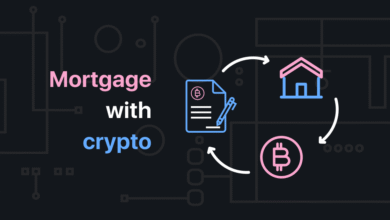Bitcoin Price Surge Following $81M Shorts Liquidated

Bitcoin price surge has captured the attention of traders and investors alike as it recently soared to $108,610, marking an impressive increase of over 2% within just 24 hours. This surge follows the significant liquidation of $155.57 million in shorts, with $81 million directly related to BTC positions, underscoring the heightened volatility in crypto trading. Expectation of a Federal Reserve rate cut has further fueled bullish sentiment among investors, contributing to the upward momentum observed in Bitcoin market trends. With institutional investments in Bitcoin continuing to pour in, confidence remains strong as the digital asset approaches the critical FOMC meeting scheduled for June 18. As the market reacts to these dynamics, the growing interest in Bitcoin signifies a remarkable shift within the cryptocurrency landscape, making it an exciting time for prospective traders.
The recent acceleration in Bitcoin’s valuation, often referred to as the cryptocurrency’s rally, reflects intense market activity and investor enthusiasm. This development is closely linked to the growing liquidation of short positions, as bearish bets are wiped out and demand for Bitcoin surges. Anticipation surrounding a potential reduction in the Federal Reserve’s interest rates plays a crucial role in shaping current Bitcoin market dynamics. With more institutional players entering the Bitcoin space, the ripple effects on crypto trading are evident, indicating a strong re-engagement with the digital asset. These market conditions suggest a renewed sense of optimism as traders navigate the complexities following significant macroeconomic shifts.
Bitcoin Price Surge Sparks Market Reactions
Bitcoin’s price surge above the $108,000 mark has sent waves of excitement through the crypto trading community. With a dramatic increase of over 2% in just 24 hours, many traders are closely watching the market trends for signs of continued upward momentum. The recent liquidations of short positions—totaling $155.57 million, with $81 million specifically from Bitcoin shorts—indicate a significant shift in trader sentiment. This liquidative pressure showcases the intense volatility characteristic of the crypto markets, emphasizing how traders are reacting to current economic indicators.
Investors are rightfully cautious, particularly with the upcoming Federal Open Market Committee (FOMC) meeting on June 18 that could set the tone for the financial landscape in the coming months. The anticipation of a Federal Reserve rate cut could further fuel Bitcoin’s rally, making it increasingly attractive as a risk asset. Moreover, the speculation around institutional investments in Bitcoin, particularly with the surge of interest in spot ETFs, continues to play a pivotal role in these market dynamics. The confluence of institutional participation and trading strategies will be critical in determining Bitcoin’s trajectory in the near term.
Institutional Investments and Bullish Sentiment Towards Bitcoin
As Bitcoin continues its impressive climb, institutional investments are notably invigorating the market. The recent comments from James Toledano, COO at Unity Wallet, illustrate the growing confidence among investors stemming from these institutional activities. Institutions are not just dabbling in Bitcoin; they are increasingly embracing it as a core part of their investment strategies. This trend is expected to reinforce the upward momentum of Bitcoin, especially if regulatory landscapes continue to stabilize in the United States.
With the potential for regulatory advancements and continuous ETF inflows, institutional interests in Bitcoin could considerably influence market behavior. As Bitcoin gains traction as a legitimate financial asset, the interplay of these external factors, combined with the speculative trading environment, will likely create an exciting yet turbulent landscape for traders. If these trends continue, we might see not just a stabilization of prices, but also a solidification of Bitcoin’s position in the broader financial ecosystem.
The Impact of Federal Rate Cuts on Bitcoin Prices
Expectations surrounding a Federal Reserve rate cut are significantly altering market sentiments regarding Bitcoin. Investors are increasingly optimistic that a dovish stance from the Fed—potentially initiating cuts between 25 to 50 basis points—could further stimulate Bitcoin’s ascent. Such monetary policy shifts generally lead to an influx into riskier assets, which may enhance trading volumes and price stability for Bitcoin as it competes with traditional assets.
Moreover, as the likelihood of maintaining interest rates stabilizes, traders are more inclined to explore investment opportunities in cryptocurrencies like Bitcoin. With the CME Fedwatch Tool suggesting only a slight chance of a rate change in the immediate future, the anticipation of favorable economic conditions could propel Bitcoin to break through resistance levels in the near future. This interplay between anticipated monetary policy and Bitcoin’s price movements is crucial for any investor looking to navigate these dynamic market conditions.
Navigating Volatility: The Prediction of Price Corrections
Despite the bullish sentiment surrounding Bitcoin, analysts like Sergei Gorev are cautioning investors about potential volatility and corrections. Current market conditions suggest a ‘Head and Shoulders’ pattern may emerge, indicating a possible price retracement to around $92,000 per Bitcoin. Such corrections could be a natural response to the intense profits taken by traders during the recent surge, exemplifying the classic ebbs and flows of the cryptocurrency markets.
This potential pullback raises questions for active traders about managing their portfolios and anticipating market swings. The dichotomy of increasing institutional interest juxtaposed with the reality of market corrections requires a strategic approach. For traders, understanding this volatility is vital, and finding the right entry points will be essential for capitalizing on Bitcoin’s eventual recovery towards higher price levels after any corrections that may occur.
The Role of Crypto Trading Strategies in Bitcoin Market Trends
The Bitcoin market trends are heavily influenced by the trading strategies employed by participants in the cryptocurrency space. As new traders enter the market, it’s clear that understanding various strategies—whether long-term investing, short selling, or leverage trading—is crucial for navigating the complexities of Bitcoin trading. The recent liquidation of $81 million in Bitcoin shorts indicates that many traders underestimated Bitcoin’s potential for short-term price surges, underscoring the importance of sound strategy and market analysis.
Moreover, with institutional investments shaping market behavior, adaptive trading strategies will be necessary to capitalize on the volatility characteristic of cryptocurrencies. Traders who rely on technical analysis and market sentiment will need to maintain flexibility in their approach to align with the ever-changing dynamics of Bitcoin. As the market matures, those who effectively integrate their strategies with institutional trends will position themselves to thrive in this rapidly evolving landscape.
Institutional Investments vs. Retail Trading in Bitcoin Markets
The dynamic between institutional investments and retail trading continues to shape the Bitcoin market, with significant implications for overall price trends. As institutions become more involved, their trading volumes and strategies often overshadow traditional retail movements. This growing influence is a crucial factor behind the recent price surge, where institutional confidence has provided a substantial counterweight to market volatility. These larger players often have access to sophisticated market tools and insights, which can lead to more stable price performances.
On the other hand, retail traders have the advantage of agility and adaptability that institutions may lack. As Bitcoin becomes more mainstream, there is a delicate balancing act between the market powers of institutional investors and those of retail traders. By analyzing the flow of capital from each side, one can gain insights into potential price movements and market trends. Understanding this duality offers a strategic advantage for all market participants aiming to navigate the high-stakes world of Bitcoin trading.
Market Indicators and Future Bitcoin Trends
Market indicators play a pivotal role in predicting future Bitcoin trends, particularly in light of current economic conditions. As Bitcoin’s price reacts to macroeconomic news, upcoming releases of economic data, and Federal Reserve announcements, traders remain focused on identifying key performance indicators. The interplay between Bitcoin prices and external market forces can provide critical insights, especially when determining bullish or bearish moves. Utilizing advanced analytics can empower traders to anticipate shifts and adapt their strategies accordingly.
Furthermore, as Bitcoin solidifies its reputation as a viable asset class, market indicators such as trading volume, market capitalization, and volatility metrics will become increasingly important. Keeping a close eye on these indicators allows traders to better navigate the speculative waves of the crypto market. Ultimately, a comprehensive understanding of market indicators will enable traders and investors to make informed decisions in an environment characterized by rapid price fluctuations.
Investor Confidence and Its Influence on Bitcoin Movement
Investor confidence is arguably one of the most crucial elements affecting Bitcoin’s price movements. Recent trends show a distinct connection between confidence in the market and the actions taken by both retail and institutional investors. As positive sentiment prevails, it fuels trading volumes and impacts overall market dynamics, leading to price surges like the one we’ve observed recently. The assurance that regulatory frameworks are becoming more defined only adds to this burgeoning confidence.
Conversely, any sign of instability—be it economic downturns or adverse regulatory news—can lead to a swift reduction in investor confidence, triggering sell-offs and volatility in the market. It’s essential for traders to gauge market sentiment and understand its implications on Bitcoin’s long-term trends. By maintaining an awareness of the psychological factors at play in trading behaviors, investors can better position themselves within the constantly shifting landscape of Bitcoin trading.
Understanding Bitcoin’s Technical Indicators and Price Resistance Levels
Technical indicators are indispensable tools in analyzing Bitcoin’s price movements and anticipating future trends. Key indicators such as moving averages, relative strength index (RSI), and support and resistance levels serve as essential guides for traders attempting to navigate the market. Understanding where Bitcoin is heading—in terms of potential resistance at price points between $112,000 and $125,000—can help traders strategically plan their entry and exit points in anticipation of market fluctuations.
Resistance levels play a significant role in the selling behavior of traders, particularly as profit-taking occurs after significant rallies. The more the price approaches these technical levels, the more pressure can build, potentially leading to temporary price pullbacks before any new highs are realized. This intricate dance between technical analysis and real-time market sentiment highlights the necessity for traders to remain vigilant and informed about both historical performance and current market conditions.
Frequently Asked Questions
What caused the recent Bitcoin price surge related to shorts liquidated?
The recent Bitcoin price surge, with BTC trading over $108,000, was significantly influenced by the liquidation of $81 million in Bitcoin shorts. Many traders betting against Bitcoin found their positions wiped out as market sentiment turned bullish, following strong positive trends in Bitcoin prices.
How does the expectation of a Federal Reserve rate cut affect Bitcoin price trends?
The anticipation of a Federal Reserve rate cut, possibly occurring in July, has rekindled bullish sentiment in the Bitcoin market. Lower interest rates typically make riskier assets, like Bitcoin, more appealing, contributing to the current price surge as investors become more optimistic.
What impact do institutional investments have on Bitcoin’s price surge?
Institutional investments play a crucial role in the ongoing Bitcoin price surge. Increased capital influx from institutions into Bitcoin and spot ETFs has boosted market confidence, driving prices up as more investors seek exposure to cryptocurrencies.
How are current crypto trading trends influencing Bitcoin’s market momentum?
Current crypto trading trends indicate a strong upward momentum for Bitcoin, partially due to rising investor confidence amidst macroeconomic developments. Traders are increasingly moving away from traditional assets and embracing cryptocurrencies, significantly impacting Bitcoin’s price surge.
Is the recent Bitcoin price surge sustainable considering market trends?
While the recent Bitcoin price surge has been propelled by significant shorts liquidation and positive institutional investments, sustainability largely depends on broader market trends and regulatory developments. Continued interest from institutional investors and favorable economic conditions could help maintain this upward trajectory.
What potential challenges could Bitcoin face after its recent price surge?
After the recent price surge, Bitcoin may face challenges such as strong resistance levels around the $112K–$125K range, where profit-taking could trigger temporary pullbacks. Additionally, volatility in the market and potential corrections could impact Bitcoin’s sustainability at higher price levels.
How do Bitcoin market trends correlate with macroeconomic factors?
Bitcoin market trends are highly sensitive to macroeconomic factors, such as Federal Reserve policies and credit ratings. For instance, recent fears about a U.S. credit downgrade and expectations of a rate cut have influenced investor sentiment, contributing to the current Bitcoin price surge.
Can Bitcoin’s price surge be attributed to external economic influences?
Yes, external economic influences, such as investor reactions to U.S. monetary policy changes and shifts in regulatory landscapes, significantly affect Bitcoin’s price surge. The current climate has led traders to favor Bitcoin as a hedge against traditional financial instability, boosting its valuation.
| Key Points | Details |
|---|---|
| Current Bitcoin Price | Bitcoin is trading at $108,610, reflecting a 2% increase in 24 hours. |
| Market Cap | The total value of the digital currency market is $3.38 trillion. |
| Short Liquidations | $155.57 million in short positions liquidated in the past day, with $81 million from BTC shorts. |
| Institutional Confidence | Increasing interest in spot ETFs and reduced regulatory concerns reflect growing investor confidence. |
| Federal Reserve Rate Cut Expectations | A potential rate cut in July is anticipated, which could positively impact Bitcoin prices. |
| Resistance Levels | Bitcoin faces strong resistance around $112K–$125K, which may lead to profit-taking. |
| Market Volatility | Despite positive trends, Bitcoin remains volatile and may experience pullbacks. |
| Correlation with Gold | Both Bitcoin and gold are influenced by changes in the U.S. monetary policy. |
Summary
The Bitcoin price surge has captivated the attention of investors, as it now stands at $108,610 after a notable increase amidst significant market developments. With a robust performance marked by $81 million in liquidated shorts and growing institutional interest, Bitcoin showcases resilience. As the market adjusts to potential Federal Reserve decisions, expectations of rate cuts could further bolster Bitcoin’s appeal as a risk asset. Moving forward, closely monitoring resistance levels will be essential as traders navigate through the volatile landscape.




